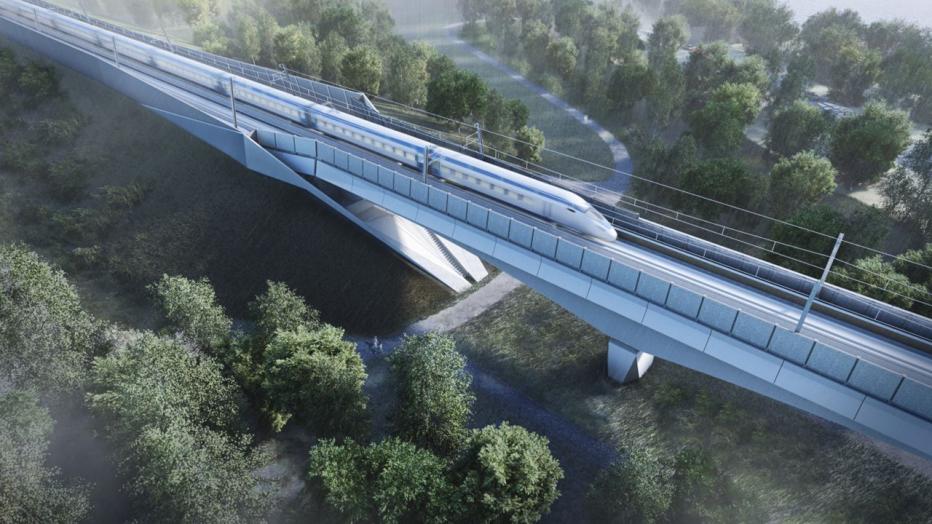
Jacobs is part of the team working for or on behalf of HS2 to stay on track to cut the amount of embedded carbon in the Colne Valley Viaduct by at least 28.4%, as works continue for what will be the U.K.’s longest railway bridge. Applying lessons from the construction of the latest European high speed railway bridges, the team has cut the amount of embedded carbon in the viaduct by 63,300 tonnes CO2e – the equivalent of 234,500 flights from London to Edinburgh.
HS2 Ltd’s main works contractor Align JV – a team made up of Bouygues Travaux Publics, Sir Robert McAlpine, and VolkerFitzpatrick – worked for four years on the design with Jacobs and Ingerop-Rendel as design partners and architects Grimshaw.
Refining design, challenging assumptions
Starting from the reference design produced as part of the HS2 parliamentary process, the team refined the design, challenged assumptions, and found efficiencies to help reduce the amount of steel and concrete in the structure. This included working closely with rail systems experts at HS2 Ltd to allow the structure to be narrowed by over one meter, while still allowing sufficient space for signaling and control equipment alongside the line. They also worked to bring the northbound and southbound tracks closer together further north, which in turn significantly reduced the amount of earthworks required for the approach embankment.
Narrowing the width of the viaduct allowed a significant reduction in carbon emissions and helps reduce disruption for local residents by reducing the number of heavy goods vehicles on local roads.

Inspired by the flight of a stone skimming over the surface of the water, the Colne Valley Viaduct will stretch for 3.4 kilometers (2.1 miles) across a series of lakes on the outskirts of London, and will be one of the most high-profile structures on the new HS2 Phase 1 between London and Birmingham.
Every element of the design was challenged during the design process, with noise barriers moving from solid concrete to a composite design with noise absorbing steel cassettes at the bottom and transparent acrylic at the top, helping to reduce the amount of concrete while also reducing the visual weight of the structure and enabling views across it.
An extensive program of test piling was also completed ahead of the start of construction with geological and structural data from these tests fed back into the design of the viaduct. This has resulted in a 10-15% reduction in the depth of the piles and associated time, cost and carbon savings.
“By providing a cleaner, greener way to travel, HS2 will help cut the number of cars and lorries on our roads, cut demand for domestic flights, and help the fight against climate change. But we’re also serious about reducing the amount of carbon we use during construction, and the Colne Valley Viaduct is a great example of how we’re using the latest engineering techniques to do just that. Concrete is one of our industries’ biggest sources of embedded carbon – and this design will help us cut our carbon footprint while delivering a lighter, stronger and more elegant structure.”

“As Carbon Manager and Life-Cycle Analysis (LCA) Practitioner for Align, Jacobs prepared the carbon and LCA baseline – reassessing the updated design at each project gateway,” says Jacobs Technical Director David Sizer. “We developed the carbon management plan encompassing carbon reduction targets, savings opportunities, stakeholder and supply chain engagement & training needs. We also implemented a PAS2080 Carbon Management in Infrastructure compliant process within Align, independently verified by the British Standards Institute, which has provided the framework for the whole value chain to focus on lower carbon solutions.”

















































